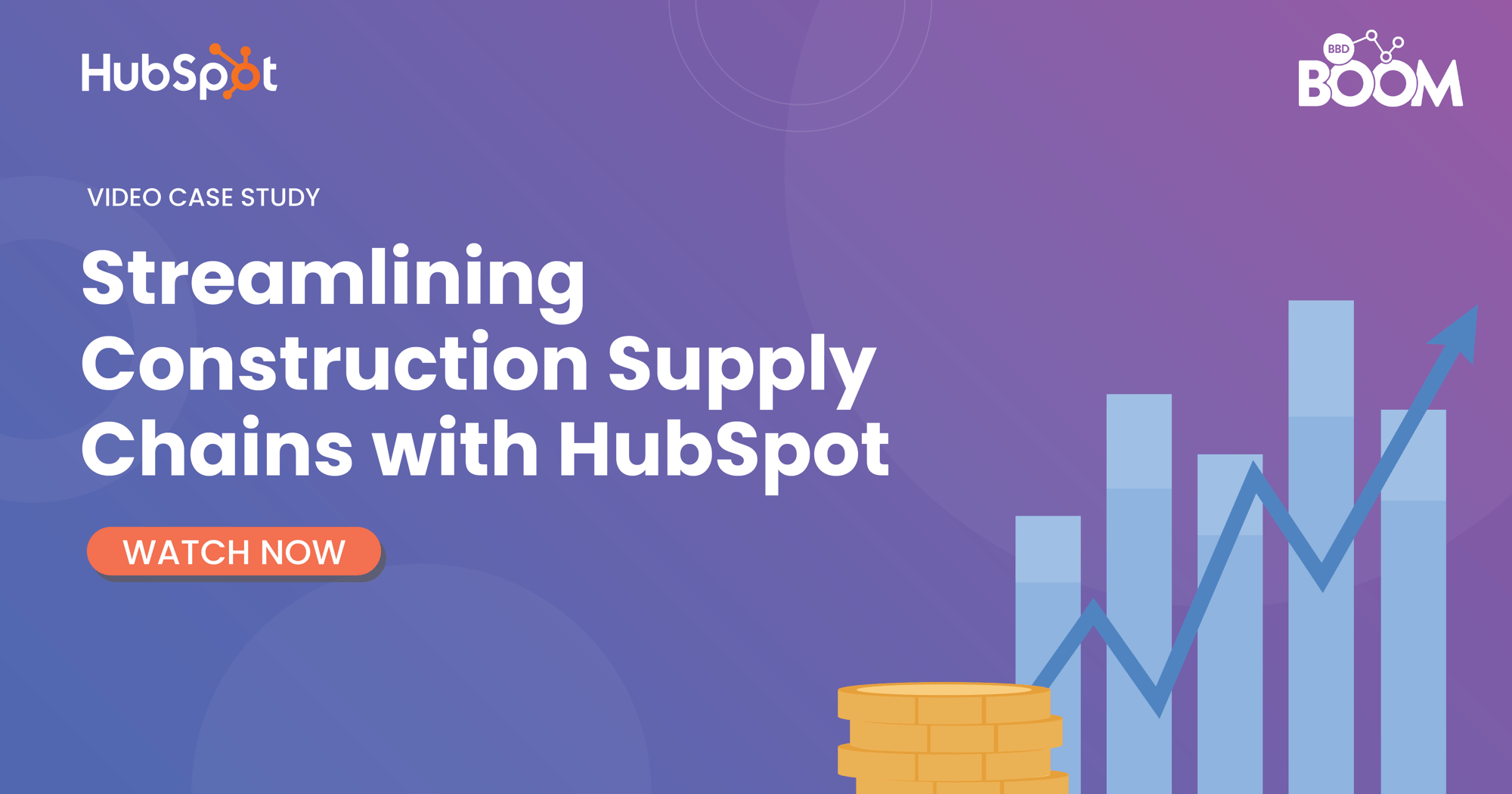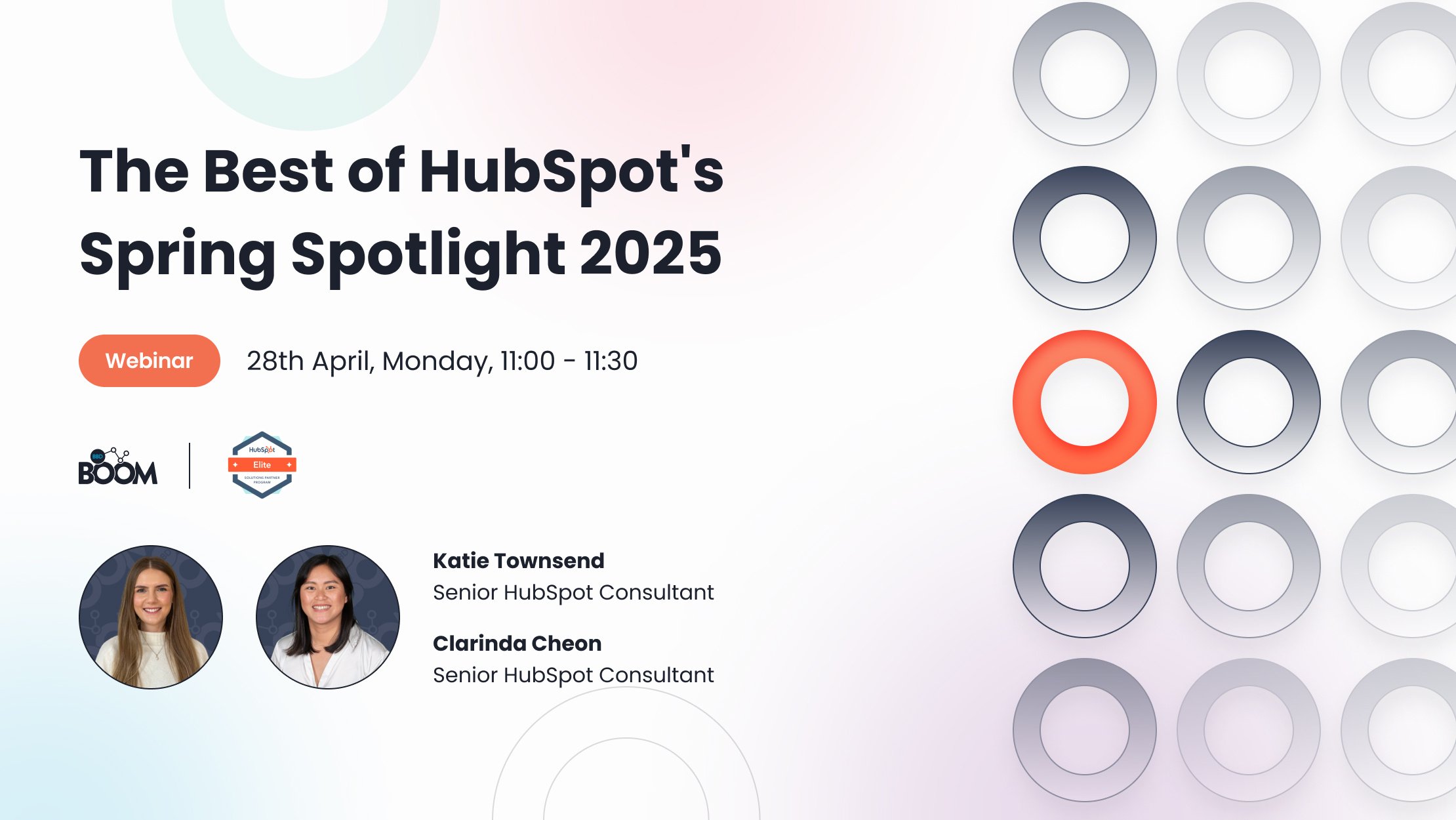It's the end of the quarter and you’re celebrating all the hard work you have been putting in over the last three months. By all accounts, your team and the campaigns you’ve made have exceeded expectations, hitting the marketing goals you’ve set. Traffic to your site is growing month on month, and so is your contact database. Things are looking up!
This is all until the marketing director swings open the door of your office (or starts an impromptu video call if you’re still working from home) and asks that one question that makes all marketers shudder…
“How is your team affecting the bottom line?”
Enter multi-touch revenue attribution reporting in HubSpot.
What is it and how does it help?
Multi-touch revenue attribution ties marketing actions to sales revenue. With multi-touch revenue attribution, you and your business can see which marketing actions have driven revenue for your business. It is also the best way to start a conversation with your team about your opportunities for improving content and process. These reports make it clear what is working versus what is not when it comes to driving revenue. It can also be a conversation starter about growing the team, because you can finally prove the impact of marketing. This, in turn, can lead to a more informed budget and hiring conversations, and can ultimately enable marketing and sales to come together, examine closed deals, and determine the best ways to replicate success in their handoff.
How do they work?
Attribution models give credit to interactions. Interactions are touchpoints a visitor has had with a company. Examples of this include: "viewed the Why Go HubSpot page" or "clicked HubSpot CRM Ad". Attribution models then assign credit to touchpoints that occur at various points in the customer journey that eventually led to a sale.
Common Attribution Model types
With HubSpot attribution reports, you and your team can apply a variety of attribution models that assign more or less credit to different moments, helping you analyse the impact of your efforts through different lenses. Let's go through the most common ones:
First touch
The first-touch attribution model attributes 100% of the deal revenue to the first interaction that happened among all contacts associated with the deal. This is helpful for identifying the value of content which drives visitors to your site. Use the first attribution model to answer questions like:
- What pieces of content are influencing the most revenue at the top of my funnel?
- How much revenue has my blog generated?
Last touch
The last-touch attribution model attributes 100% of the deal revenue to the last interaction that happened with that contact before the deal was closed. This will identify the value of actions taken at the bottom of the sales funnel. Use the last-touch attribution model to answer questions like:
- How much revenue is being attributed to sales activities?
Full-path
The full-path attribution model distributes 90% of the revenue credit equally among the four 'major' interactions, and splits the rest among the middle interactions that remain. This model is able to take into account the important stage between deal creation and deal closing, which would be ideal in representing business models where deal negotiation is lengthier.
In terms of numbers, 22.5% of credit goes to the first interaction, 22.5% to lead creation, 22.5% to deal creation, 22.5% to last interaction, and the remaining 10% is split equally among remaining interactions. Use this model to understand the pieces of content that are generating the most revenue. Use the full-path attribution model to answer questions like:
- What is driving contacts to my site?
- What is getting visitors to fill out forms and sign deals?
Linear
The linear attribution model groups deal revenue equally among all the interactions that happened before the deal was closed. This can be a useful baseline report to have in your pocket, especially when getting started with attribution reporting, because it helps you see how contacts interact with assets before closing a deal. Use the linear attribution model to answer questions like:
- What parts of my business are most valuable, as measured by the revenue generated by my customers?
U-shaped
The U-shaped attribution model emphasises the top-half of the customer funnel. How? It assigns 80% of the credit to the interactions where your contact first interacts with your business. The remaining 20% is assigned to interactions after your visitor becomes a lead in your CRM. The remaining credit goes to other interactions that your customers interacted with. What does this look like? Let’s break it down.
40% of credit is assigned to the first interaction, another 40% is assigned to the interaction that led to lead creation, and the final 20% is split equally among all other interactions between the first interaction and lead creation. Use the U-shaped attribution model to answer questions like:
- What pieces of content on my website are getting leads into my CRM who are then going to close and earn revenue for my company?
W-shaped
The W-shaped attribution model distributes 90% of the revenue to the first interaction, lead creation, and deal creation interactions. This model is still mostly focused on marketing efforts, although the inclusion of deal creation can give further insight into the handoff between marketing and sales at this point in the customer journey.
To review, 30% goes to the asset that led to the first interaction, 30% goes to the asset that led to lead creation, 30% to deal creation, while the remaining 10% is split equally among all other interactions between the first interaction and deal creation. Use the W-shaped attribution model to answer questions like:
- What marketing tools are valuable to me in trying to get customers to create a deal on my e-commerce site?
Sound confusing? We thought the same thing to start with. The attribution modelling tool within HubSpot is relatively new as it only launched at the beginning of 2020. Although it might not be something you are familiar with now, it’s not to be slept on.
Being able to attribute actual revenue to your marketing efforts is something marketers have been looking for since the beginning. If you want to see tangible evidence of it having an impact on a global organisation, check out our webinar with CMO of Lumi Global, Kerry Leighton-Bailey, where we discussed how attribution modelling turned the heads of her CEO and contributed to turning her redundant HubSpot account into a seven figure revenue machine in under 30 months. Click below to watch:

.png)









